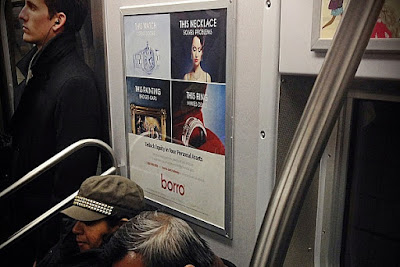Driving business is the growth of art sales at the top levels—where lenders feel confident that a work could retain most of its value over the longer term. Skate’s identifies the $1m-$5m and the over $20m ranges as “the most liquid art-market segments today”.
The lower end of the scale is also witnessing some growth: the report highlights the inroads made by Borro, which will lend against works that are valued starting at $5,000 (although its average is $250,000).
Lending rates vary among the 39 businesses identified. Private banks—that generally take assets other than art into account—can go as low as 2%, while the specialist firms can charge 15% (Skate’s was only able to get rate information from 9 of the 39 firms that it lists). The majority of firms will not lend more than 40% to 50% of a work’s value, although Borro does offer up to 70%, provided it has the right to sell the work.
Adding considerable weight to the industry is Sotheby’s, the biggest art lender to date, according to the report (and based on publicly available sources). In early 2014, the auction house established a separate business dedicated to finance, and now has the ability to lend up to £1.3bn against art.
Paul Ress, the founder of Right Capital (a UK-regulated firm that matches art lenders with borrowers), says that art buyers are beginning to understand how debt could be used “intelligently”, as it is in other industries. He also identifies the “challenges” lenders face—already familiar within the art market—such as the risks of valuation, title and authenticity, which he says are increasingly being addressed by the insurance industry. The art loan industry has faced challenges in the past, including lawsuits involving the celebrity photographer Annie Leibovitz and the artist Julian Schnabel.
A full copy of the report is available at Skate’s Global Art-Loans Report
-----
Last week, the highly respected Wallspace gallery in Manhattan announced it would close its doors permanently on Friday. The lease was up, and "it necessitated a re-evaluation", says Jane Hait, who co-founded the space with Janine Foeller. "It's a particularly tough climate for people doing work that's not necessarily super commercial."
The closure of such a celebrated fixture of the New York art scene underscores the fact that - despite the unprecedented avalanche of money blanketing the contemporary art world (something that is also seen here) - it's surprisingly difficult for galleries to make money.
The news of Wallspace's closing comes just weeks after the English release of Management of Art Galleries, a slim book that caused a furore when it was published in Germany earlier this year. Written by a 31-year-old German entrepreneur/professor/art adviser named Magnus Resch, the book argues that most galleries are undercapitalised and inefficient - and, moreover, that with proper business strategies, the entire art market could be turned into a profit-generating machine.
But the entire market is not profitable. After laying out his data and methodology (he sent a survey to 8,000 galleries and more than 1,300 responded with information on revenue, staff numbers and location), Resch isolates what he considers galleries' key impediments to profitability.
First, the rent is too high. In the US and Germany, the physical cost of an exhibition space was listed as galleries' greatest expense, and Resch writes that "the almost unanimous, and unquestioned, conviction that central premises in a major city are essential simply cannot be justified with an economic rationale".
In other words, collectors will go wherever the art is, and everyone else - the crowds at openings, the passers-by who pop in - has no bearing on the gallery's bottom line. Paying a premium for a desirable location, according to Resch, is therefore pointless. His research also suggests artists make too much and gallery staff make too little. Galleries generally split the sale of a work 50/50 with the artist. Resch argues that since galleries often have to cover marketing, production, shipping, and insurance costs, it should be closer to 70/30.
-
Resch also discovered that the more a gallery spent on employee salaries, the more profitable the gallery became. In one respect, this makes intuitive sense: once a gallery is successful, it can afford to pay its employees more. But Resch says that higher pay, tied to performance, is a greater incentive - the more money employees make by doing well, the more they want to succeed.
Resch points out the majority of galleries are trying to attract a tiny number of contemporary art collectors. Diversify, he suggests. This is easier said than done, though: the contemporary collector base may be small, but the groups interested in other periods are even smaller. That's basically why everyone is selling variations of the same art; it's simply what collectors want to buy.
His recommendations range from the reasonable (galleries should have rigorous contracts with their artists) to the jaw-droppingly silly. In an effort to spice up the sales experience, for example, he suggests that galleries use sparklers to denote sold works at openings, and he makes the bold statement that, due to the art world's low salaries, "the best educated people will almost always choose another industry to work in". Ouch.
The realities of the primary art market depicted by Resch's data, however, are harder to argue with. It turns out that the upbeat world of biennials and art fairs and parties is, in fact, a cutthroat, antiquated, deeply flawed industry hampered by an obsession with keeping up appearances and an often misguided aversion to making money. No wonder a gallery such as Wallspace closes.
"Our primary focus didn't always correlate with financial success," according to Hait. "It's unfortunate, because galleries doing things like we were trying to do have a tough time staying in business."
--------------------




No comments:
Post a Comment
Note: only a member of this blog may post a comment.